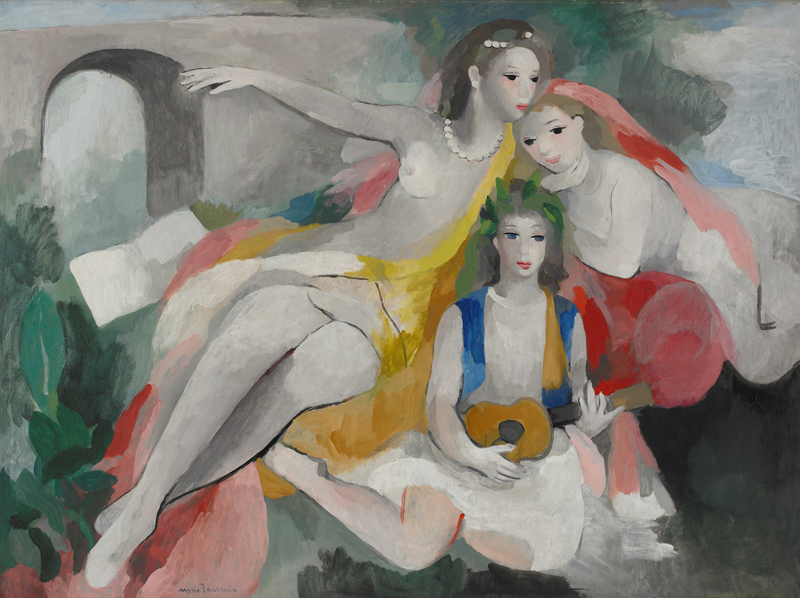If you’ve ever heard of Marie Laurencin (1883–1956), she’s that rad artist in Picasso’s crew who painted women all soft and pastel. But here’s the tea: she was low-key subversive during the Cubism craze. Laurencin was like, “Why paint dead fish when you can paint pretty girls?” Her twist? Her women-packed world was all about those 1920s Lesbian Paris.
The Mysterious Sapphic Paris: Laurencin’s Solo Show
In Philly’s Barnes Foundation until January 21, there’s a cool exhibit called “Marie Laurencin: Sapphic Paris.” Curator Cindy Kang spills the beans, saying Laurencin’s art isn’t just pink and blue fluff. There’s a deeper, darker vibe, speaking to the different worlds she navigated.
Laurencin’s Journey from Teacup to Art Scene Rebel
Marie Laurencin wasn’t born into privilege, but she kicked off her art journey painting a teacup her mom asked for. That teacup kicked things off, and she officially dove into art around 1902, hitting up a drawing school in Paris and later the Académie Humbert, where she met cool cats like Georges Braque and Francis Picabia.

Early Works and Entering Picasso’s Squad
In 1905, she dropped “Song of Bilitis,” a print showing two ladies about to kiss. Artsy, right? She linked up with Picasso and Braque in 1907 and became part of Picasso’s crew. She even had a romantic fling with writer Henri-Pierre Roché, one of her ride-or-die pals.
Cubism, Love Affairs, and the Aftermath of World War I
She toyed with Cubism but kept it real with her own style. After her thing with Apollinaire fizzled and World War I hit, she stepped away from the Cubist squad. She wasn’t vibing with it, calling it a poison that killed her creativity.
Spanish Isolation and Art Evolution
During the war, she found herself stuck in Spain with her German hubby. This isolation led to her changing up her style. Less color, more layers, and a focus on pink, blue, and gray. She even got inspired by Goya’s paintings of women.
Marriage, Independence, and Queer Coding
Her marriage tanked, and she came back to Paris in 1920, a free woman. Laurencin started a series called “Two Friends,” which could totally mean lovers. Check out “Women with a Dove” (1919), a painting of her and her lover, Nicole Groult. It’s all subtle queerness and over-the-top femininity, her way of keeping it on the down-low.
Laurencin’s Legacy: Under-the-Radar Queer Art
Marie Laurencin stayed under the radar with her queer identity in art, unlike the bold Tamara de Lempicka. Laurencin’s subtle, coded style was like a camo for her true self. It’s like a wink in a room full of pastels and softness, saying, “Yeah, I’m here too.”
So, if you’re into a mix of soft hues, sapphic vibes, and a hint of mystery, check out Marie Laurencin’s exhibition. It’s not just about pretty pastels; it’s about a world where women rule and love whispers between the brushstrokes. –koin303

